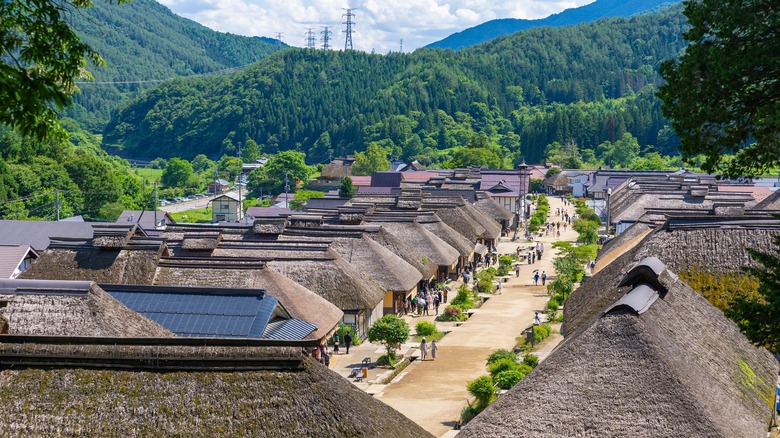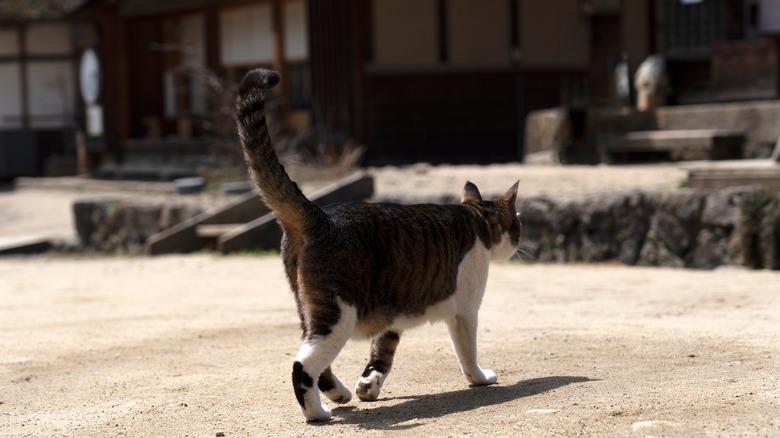A Historic Village In Japan Is A Well-Preserved, Underrated Gem Where Time Slows Down
Hidden within the mountains of Japan's Fukushima Prefecture, Ouchi-juku is a remarkably well-preserved Edo-era post town where time seems to stand still. Once a vital rest stop along the Shimotsuke Kaido or Aizu Nishi Kaido trade route, this quiet hamlet now invites travelers to experience an unfiltered side of historical Japan — free from crowds, commercialization, and the buzz of modern life. Lining the main street are thatched-roof buildings, many of which have stood since the 17th century, offering soba noodles, handmade crafts, and warm hospitality, making this an unmissable Japanese destination outside of Tokyo.
Getting to Ouchi-juku is a bit of a schlep, but a charming one. The village is about a five- to six-hour journey from Tokyo, reachable via train to Yunokamionsen Station followed by a 15-minute taxi or bus ride. It's easier to visit if you're in Japan for Fukushima or Niigata rather than Tokyo. Though a bit off the beaten path, the reward is a truly immersive experience: crisp mountain air, the smell of wood smoke curling from old chimneys, and a pace of life that invites you to slow down and linger.
If you're short on time, Kawagoe is another traditional Japanese city full of history and just a 30-minute train ride from Tokyo. But if you can slow down, Ouchi-juku is the antidote to overcrowded tourist hubs. Here, history isn't behind glass — it's beneath your feet, over your head, and surrounds you from all directions.
Soba noodles, thatched roofs, and must-see views in Ouchi-juku
One of the best ways to take in Ouchi-juku is to just walk along its main street. End your stroll at the Ouchi-juku Viewpoint, a short but steep climb at the north end of town. There, you'll get panoramic views of the village's preserved thatched rooftops. It's especially beautiful in autumn when the surrounding forests ignite in crimson and gold.
You can't leave without trying negi soba. It's the town's local specialty: handmade buckwheat noodles eaten with a green onion stalk instead of chopsticks. For a super authentic experience, grab a table at Misawaya (open daily from 10 a.m. to 5 p.m.), one of the most well-known soba shops in town. Its sunlit tatami room and friendly staff make it a cozy stop for lunch. Be sure to reserve a table in advance, unless you want to wait for at least 40 minutes.
If you're lucky enough to visit in February, don't miss the Ouchi-juku Snow Festival, when the village glows under lantern light and traditional performances bring the streets to life. Taigo drum performances, fireworks, rice cakes, and dango dumplings might just make you forget about the frigid weather. It's one of the most enchanting times to see the village — just bundle up and book early.
Planning your stay in this sleepy Fukushima village
You won't find any high-rise hotels here — just rustic minshuku (family-run guesthouses) and ryokans where guests sleep on futons laid over tatami mats and enjoy home-cooked meals by the hearth. Staying overnight lets you experience Ouchi-juku at its quietest, after the day visitors have gone and the stars begin to spill across the mountain sky. Expect to pay around $50 to $80 a night, including breakfast and dinner.
Ouchi-juku is a year-round destination, but the best times to visit are in late spring through autumn for clear skies and comfortable weather. Winter, while beautiful, can be snowy and cold — ideal for photographers but less so for casual travelers unless you're dressed warmly. Ryokans are not likely to have central heating, either, so bring layers. If you're coming in the colder months, try to make time to stay at one of Japan's top ski resorts.
Whether you're captivated by quiet streets dusted in snow or want to be warmed by a bowl of soba under a thatched roof, Ouchi-juku offers a kind of peace you can't find just anywhere. It's not the easiest place to reach, and that's exactly why it's worth the journey.


